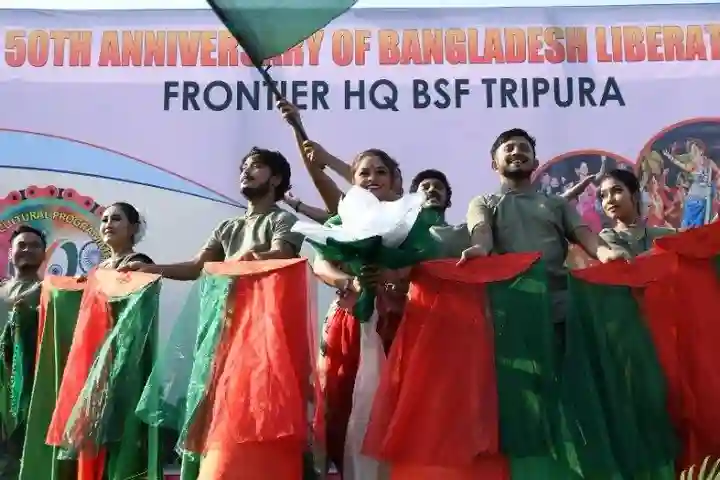As India and Bangladesh gear up to celebrate December 16 marked as Vijay Diwas for the South Asian nation, elaborate preparations are on even in the small northeastern state of Tripura. An emotional Bangladesh Prime Minister Sheikh Hasina during her trip Agartala in 2012 had recalled the immense contribution of the people of the northeatern state.”
“If Bangladesh is India-locked, Tripura is Bangladesh-locked — goes an adage in the region,” a study by the Observer Research Foundation noted.
India-Bangladesh relations have typically been driven by an overpowering narrative that emphasizes the commonalities between the people of West Bengal and the South Asian nation. True the two share common culture, language and food habits but the role of other states including that of Tripura, that is almost tucked within Bangladesh, cannot be ignored.
Also read: Maitri Diwas: From physical to emotional connectivity—the way forward for Indo-Bangladesh ties
“About 84 per cent of the state’s border is actually with Bangladesh and Tripura had also a significant contribution in the 197 Liberation War,” Ashish Nath Professor, Department of Economics, Tripura University told India Narrative.
The state government and the Government of Bangladesh have lined up several events and functions to mark the day. Dhaka has also proposed to set up a Bangabandhu Centre in Tripura University.
Nath said that during the war, the state government of Tripura opened its door to lakhs of refugees coming from the erstwhile East Pakistan- now Bangladesh. The state government provided “all kinds of support to the helpless refugees.”
1971 :: Refugees During Bangladesh War Standing In Queue to Get Food In a Transit Camp In Agartala , Tripura
( Photo – Marilyn Silverstone / Magnum ) pic.twitter.com/SdtmYrIXso
— indianhistorypics (@IndiaHistorypic) January 24, 2020
Another analyst said that notwithstanding the political contours that drive New Delhi and Dhaka and the occasional ups and downs, the people of Tripura and Bangladesh have continued to maintain a strong bond. “The people living on both sides of the border have the same life, problems and livelihood..there are talks of increasing people to people contact but here we have always seen a continuation of that tradition,” he said.
Small wonder therefore that Seemin Hossain Rimi, member of Bangladesh Parliament and daughter of Tajuddin Ahmad, the country’s first prime minister, visited Tripura just a few days ago. Regarded as one of the architects of Bangladesh, Ahmad, as the Prime Minister, had led the country’s Provisional Government during the Liberation War in 1971.
New agency PTI said that Rimi who “along with her family escaped to Tripura after a murderous military crackdown during the 1971 war for the liberation of Bangladesh, has made the journey back to thank the people of the tiny northeastern state.”
Also read: India and Bangladesh need to focus on cross-border trade
The news agency further noted that Sonamura, a small town bordering the Comilla district of Bangladesh sheltered thousands of refugees from Bangladesh. Not just that, during the war it also “housed a training camp for Mukti Bahini (Free Bangladesh forces) as well as a makeshift hospital for them.”
During her visit Hasina said, “Our freedom-fighters also received training and support on this side of the border, and eventually fought with our Indian friends to the final surrender of the occupation forces and liberation of Bangladesh on 16 December 1971. How can we not remember with gratitude our friends in need in Tripura and India?”




















